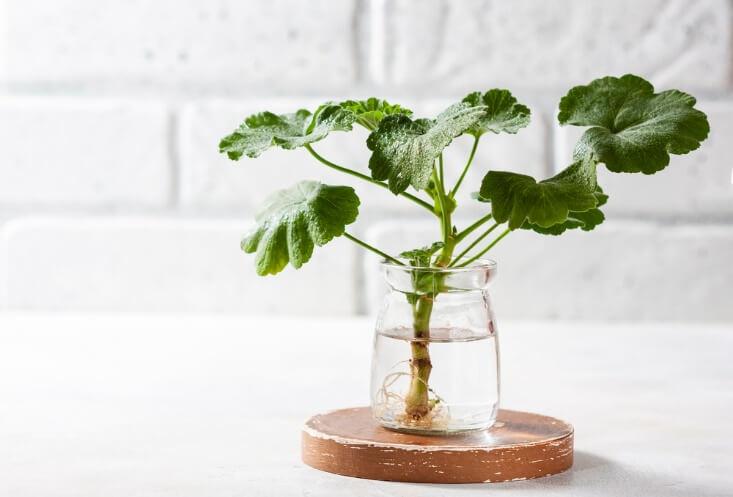The effects of contaminants in domestic water are well documented. The Centers for Disease Control and Prevention
notes that “Contaminants in our water can lead to health issues, including gastrointestinal illness, reproductive problems, and neurological disorders.” Adding, “Infants, young children, pregnant women, the elderly, and people with weakened immune systems may be at increased risk for becoming sick after drinking contaminated water.”
Crucial as it may be, clean water is not guaranteed for many people. For instance, the World Health Organization reports that “Contaminated drinking water is estimated to cause
485,000 diarrhoeal deaths each year.”
Although governments and local authorities want us to believe that the water flowing out of our taps is clean, there is no way for a layman to tell if this is indeed the case. This is the reason many people turn to reverse osmosis (RO) for peace of mind.
This article answers some frequently asked questions about reverse osmosis.
What Is Reverse Osmosis?
To get a better idea of the concept of reverse osmosis, let’s start by defining osmosis.
The Encyclopaedia Britannica
defines osmosis as “the spontaneous passage or diffusion of water or other solvents through a semipermeable membrane.” The same information database adds that a semipermeable membrane is “one that blocks the passage of dissolved substances” called solutes.
Osmosis happens naturally. The best example of naturally occurring osmosis is when plant roots absorb water from the ground. On the other hand, reverse osmosis is a technology that uses the same principle as natural osmosis. However, in reverse osmosis, the water is not left to permeate the semipermeable membrane naturally. It is forced through the membrane under pressure.
The difference between osmosis and reverse osmosis is that in the former, the clean water moves towards the contaminated water. Reverse osmosis turns the model on its head. It moves clean water from the contaminated side towards the side with more clean water.
How Does Reverse Osmosis Work?
Domestic water is delivered under pressure; that's how it gets to your home, whether you live in a valley or a skyscraper. Reverse osmosis takes advantage of this pressure to force the water through a semipermeable membrane.
As the water is forced through the semipermeable membrane, it leaves impurities on the other side of the membrane. This ensures that the water that comes through your tap is the cleanest you can get. To ensure that RO systems produce water that's as clean as possible, many such systems involve several filtration stages, sometimes up to seven.
What About The Tankless Reverse Osmosis Systems?
Traditionally, once the water is filtered, it is stored in a tank ready to be used. However, it has been noted that RO systems that include a tank have a disadvantage. If not flushed and cleaned regularly, such systems can become a breeding ground for bacteria. Such a system can also produce water with a foul smell because of the rubber that separates the air from the water.
Fortunately, technology has solved the problems inherent in RO systems that involve tanks by introducing a new generation of efficient RO systems that do not require a storage tank. Such a system - called the
Tankless Reverse Osmosis System - is more efficient. The system wastes less water when compared to the traditional systems with tanks.
Apart from eliminating the need to store water and potentially create a breeding ground for bacteria and foul adores, tankless systems come with several other advantages:
They save costs because water is only produced when it is required.
There is no need to wait for the tank to accumulate water when the water in the tank is finished.
The water tastes better when compared to that which is produced by traditional RO systems.
It saves the space that the tank would have otherwise taken.
Where Is Reverse Osmosis Used?
RO is used in both domestic and industrial contexts. In the domestic setup, the process is used to supply clean water to households. It's preferred by those who want to be sure that the water they drink has gone through an extra layer of purification.
Reverse Osmosis can also be used when you are sure that the water you are drinking has not been treated, such as when
camping.
In industrial use, RO is utilized for large projects such as seawater purification through a process known as desalination. It is also used in industries whose activities contaminate water, such as mining. The reclamation of water using reverse osmosis makes it possible for water that would have otherwise been unsuitable for drinking to become safe and drinkable.
What Are The Basic Components Of An RO System?
An RO system consists of some essential components:
Coldwater line valve: Is the valve controlling the water that goes into the RO system from the main supply.
Reverse osmosis membrane: This is the part that separates the water from the impurities.
Filters: The reverse osmosis system uses several filters before the water eventually makes its way into the pressurized tank from which it can be used. The pre-filters treat the water as it makes its way into the storage tank from the main supply. The post-filters treat the water for the final time before it is used.
Storage tank: The filtered water is kept inside a storage tank. Some systems do not use a tank. These tanks, which come in different sizes, are pressurized. The RO system has a way of shutting off the passage of water through the membrane once the tank fills.
Check valve: Because treated water is kept under pressure, the check valve ensures that it doesn't flow backward from the RO storage tank. If treated water was to flow backward, it would damage the membrane.
Flow restrictor: While the water passing through a membrane does so under pressure, such pressure is regulated so that the process captures all the impurities. The flow restrictor regulates this pressure.
Drain line: The captured impurities have to leave the RO system at some point. They do so through the drain line.
How Many Stages Does An RO System Have?
Generally, the RO system involves four stages:
Sediment filter: Ensures that large particles that could damage the RO membrane are eliminated early in the process.
Carbon filter: Is also designed to protect the RO membrane by eliminating chlorine and other contaminants. This is the stage where foul odors are removed, and the taste of the water is improved.
Reverse osmosis membrane: Is the main stage where almost all the remaining contaminants are removed from the water.
Polishing filter: This stage happens just before the water is used. It aims to remove any remaining contaminants and bad odor one final time.
Which Contaminants Are Removed By RO Systems?
The website that helps consumers to find the best water filter systems, RO-System.org, lists some of the
contaminants removed by RO:
| Lead |
Cadmium |
| Arsenic |
Phosphate |
| Nitrates |
Radium |
| Nitrites |
Chlorine |
| Chromium |
Barium |
| Selenium |
Bacteria |
| Fluoride |
Cysts |
| Viruses |
Mercury |
What Are The Benefits Of Using An RO system?
An effective RO system can remove up to
99% of known contaminants from water. Below are some of the benefits of an RO system:
Lowers the proportion of dissolved harmful chemicals in the water.
Provides clean water in areas where it's impossible to get treated water, such as on camping trips.
Removes odors and bad taste.
Can be installed easily and requires low levels of maintenance.
Designed to fit into the existing water supply.
Is friendlier to the environment when compared to bottled water.
What Are Advantages Of RO Over Other Water Filtration Systems?
Generally, when compared to other water filtration systems, reverse osmosis uses less energy. The system can save energy because it is more efficient. Saving energy means that you will get cleaner water for less money.
RO systems can be designed to be smaller than other water filtration systems. This means that they take less space. Also, the space they take
under the sink is often not otherwise productively used. Some RO systems do not use tanks, further saving space. The system is also easy to maintain.
Does RO Impact The Environment?
Widespread concern for RO systems is with the amount of water that needs to be discarded as wastewater. However, there is a solution to this challenge. The wastewater can be used for other purposes, such as cleaning and flushing the toilet.
Like all other systems, RO has an impact on the environment. However, that impact pales in comparison to alternatives such as bottled water.
What Is The Lifespan Of A Reverse Osmosis system?
Generally, a reverse osmosis system is designed to last between 10 and 15 years. However, it is important to remember that, like all other machines, the system has specific consumables that need to be replaced at regular intervals. These include the filters and membrane.
Generally, filters need to be changed once or twice a year. On the other hand, the membrane has a longer lifespan of between two and four years. The lifespan of the membrane will depend on the water conditions where the membrane is used.
What Factors Should I Consider When Choosing The Best RO System?
Even though an RO system’s primary functions are the same, not all systems are created equally. Mostly, the difference is in the quality of the components used in manufacturing a particular system.
When looking for an RO system, consider the following elements:
Number of filter stages; the more the stages, the better.
Efficiency, measured based on the amount of water the RO system can produce in a day.
User reviews.
Efficiency in rejecting contaminants, measured as a percentage of the contaminants removed.
The technology and quality of parts used. Do any industry quality standards endorse the parts?
Manufacturer reputation.
How Hard Is It To Maintain An RO system?
The RO system is relatively easy to maintain. If you want your system to last as long as possible, remember to change the filters when required.
To help make the process of changing filters a little easier, some sophisticated RO systems now come with sensors that will show, using an LED light, that it’s now time to change the filter. However, the simplest thing to do is to follow the instructions of the manufacturer.
Generally, RO systems are designed in a way that filters can be changed without using any tools. Where tools are required, they are usually provided by the system's makers when delivering your RO system.



































































